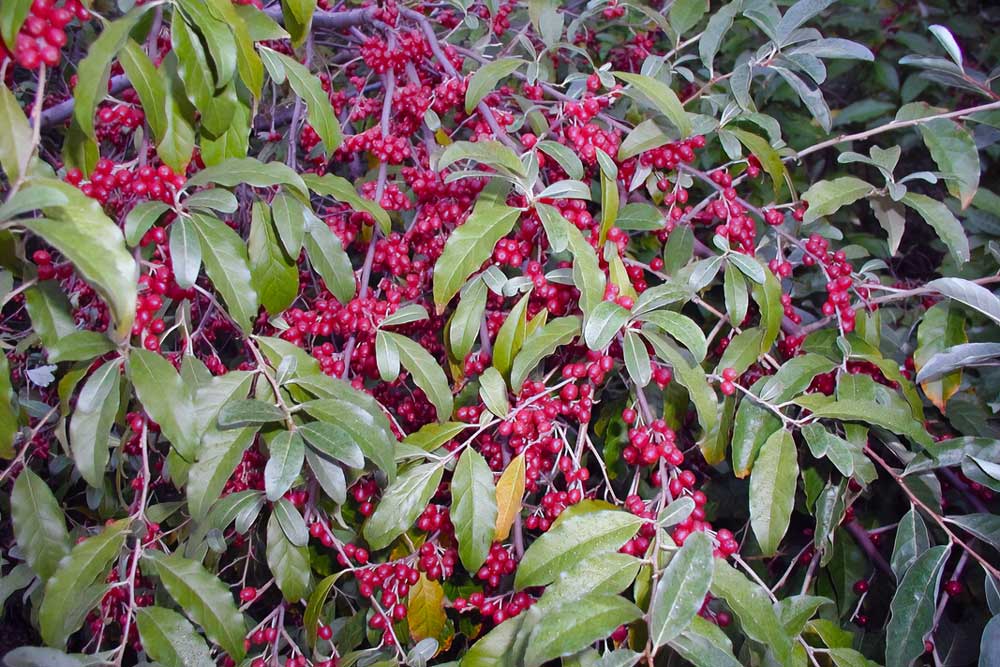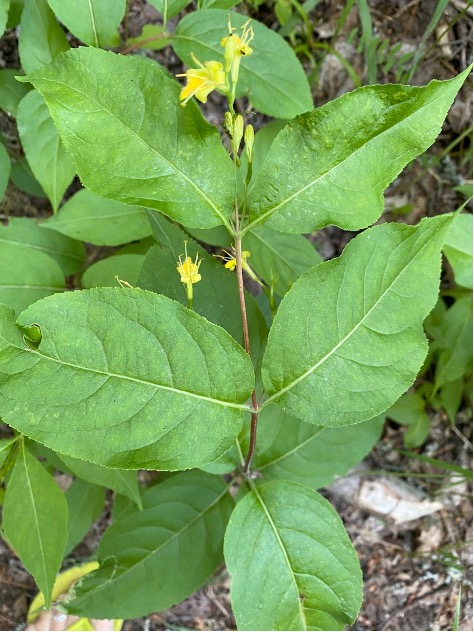
As many plants begin their shift into dormancy and the cold weather sets in, you too may feel it’s time to hunker down for the approaching winter. However, this time of year offers a great opportunity to get the upper hand on some common invasive plants you may have on your property. You will thank yourself this spring.
Why Now?
Invasive species often leaf out and stay green longer than native species, making them easier to identify and treat well into autumn. For best results, many plants must be treated at specific times of the year, but three species we recommend treating all respond well from late fall to early winter. Best of all, completing these tasks now during the cool autumn days means more time to sit back and relax during the heat of summer.
What Can I Treat?

Bush Honeysuckle
Lonicera spp.
Bush Honeysuckles were introduced to prevent erosion and provide a food source for animals, but unfortunately, Honeysuckle is thought to secrete a chemical that prevents other plants from growing and they can grow in the understory, blocking out light for other species.
Bush Honeysuckles will remain green long after most other leaves have fallen. The stems are reddish-brown with oppositely arranged oval leaves and they produce white and yellow sweet-smelling flowers in Spring. Small bush honeysuckle can be removed by hand pulling, just be sure to remove as much root material as possible. For larger, problematic bush honeysuckles, the cut-stump method of herbicide application is recommended. This involves cutting the bush low to the ground and applying a small amount of herbicide to the fresh cut. This is a very targeted herbicide technique that is recommended for many woody invasives.
More info: https://extension.psu.edu/shrub-honeysuckles

English Ivy
Hedera helix
English ivy is an evergreen vine that can be found climbing trees or covering the ground. It was introduced as an ornamental and is still offered at many garden centers. Left untreated, it can climb, completely shade out, and kill trees, as well as create dense mats on the forest floor. To treat English Ivy, cut at least an inch out of vines that are climbing trees. The vines above will die and eventually fall. Do not pull english ivy vines off of trees, as this can harm the tree. Hand-pull or rake vines that cover the ground, especially in areas around trees. If English Ivy is placed in a pile near soil, it can potentially resprout and grow roots, so be mindful to place all vine material in a location that it will dry out without access to soil.
More info: https://extension.psu.edu/english-ivy-in-the-landscape

Autumn Olive
Elaeagnus umbellata
Autumn olive was introduced in 1830 from Asia as an ornamental plant, as food and habitat for wildlife, and to control erosion. It grows in dense stands if left uncontrolled. Autumn Olive is another invasive plant that holds onto its leaves well into the fall. The leaves are long and slender with a silver, scaly underside. Stems are rough and speckled with several long brown thorns along its length. Small Autumn Olives can be pulled by hand, while larger plants will need herbicide application (the cut-stump method works well) to effectively kill them.
More info: https://extension.psu.edu/autumn-olive
These are only a few species that can be treated in the winter. We encourage you to look into other common invasive species and the best times and methods to control them. Every bit helps!
Disclaimer Regarding Herbicide Use– Please follow all safety instructions printed on herbicide labels. Use systemic herbicides to avoid stream and waterway pollution and always wear proper PPE when applying herbicide.
